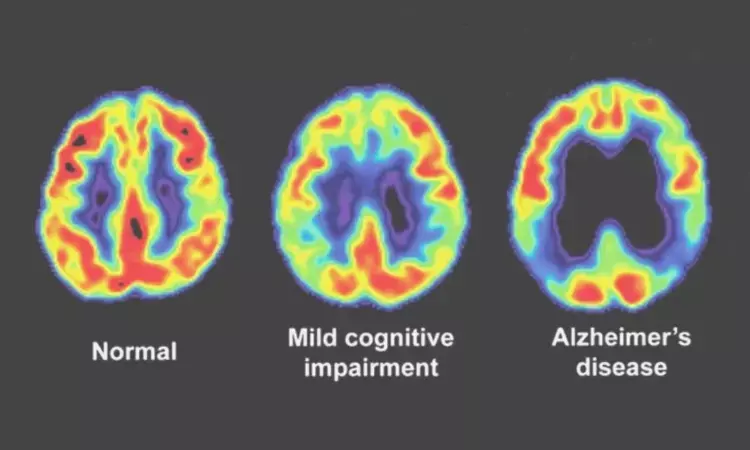- Home
- Medical news & Guidelines
- Anesthesiology
- Cardiology and CTVS
- Critical Care
- Dentistry
- Dermatology
- Diabetes and Endocrinology
- ENT
- Gastroenterology
- Medicine
- Nephrology
- Neurology
- Obstretics-Gynaecology
- Oncology
- Ophthalmology
- Orthopaedics
- Pediatrics-Neonatology
- Psychiatry
- Pulmonology
- Radiology
- Surgery
- Urology
- Laboratory Medicine
- Diet
- Nursing
- Paramedical
- Physiotherapy
- Health news
- Fact Check
- Bone Health Fact Check
- Brain Health Fact Check
- Cancer Related Fact Check
- Child Care Fact Check
- Dental and oral health fact check
- Diabetes and metabolic health fact check
- Diet and Nutrition Fact Check
- Eye and ENT Care Fact Check
- Fitness fact check
- Gut health fact check
- Heart health fact check
- Kidney health fact check
- Medical education fact check
- Men's health fact check
- Respiratory fact check
- Skin and hair care fact check
- Vaccine and Immunization fact check
- Women's health fact check
- AYUSH
- State News
- Andaman and Nicobar Islands
- Andhra Pradesh
- Arunachal Pradesh
- Assam
- Bihar
- Chandigarh
- Chattisgarh
- Dadra and Nagar Haveli
- Daman and Diu
- Delhi
- Goa
- Gujarat
- Haryana
- Himachal Pradesh
- Jammu & Kashmir
- Jharkhand
- Karnataka
- Kerala
- Ladakh
- Lakshadweep
- Madhya Pradesh
- Maharashtra
- Manipur
- Meghalaya
- Mizoram
- Nagaland
- Odisha
- Puducherry
- Punjab
- Rajasthan
- Sikkim
- Tamil Nadu
- Telangana
- Tripura
- Uttar Pradesh
- Uttrakhand
- West Bengal
- Medical Education
- Industry
Aortic stiffness, potential target for preventing tau-related pathologies: JAMA

USA: In a new study published in the Journal of the American Medical Association - Neurology, abnormal central vascular hemodynamics has been shown to be associated with higher tau loads in specific regions of the brain. Findings suggest that aortic stiffness, which is potentially modifiable, may be a probable independent target for preventing tau-related pathologies.
Aortic stiffness is associated with clinical features of Alzheimer's disease and related dementia and may represent a modifiable target for disease prevention. Therefore, Leroy L. Cooper and his team performed this study to evaluate the link between aortic stiffness and pressure fluctuations with global amyloid plaques and regional loads in the brain of middle-aged and older adults without dementia.
The sample for this cross-sectional study was obtained from the Third Generation Cohort of the Framingham Heart Study at review 3, in which 3092 subjects successfully underwent comprehensive hemodynamic assessments. At a follow-up visit (2015-2021), a subgroup of 270 participants without dementia who represented the vascular risk spectrum also underwent positron emission tomography.
13 participants were excluded because of the lack of covariance data. The final sample size was 257 participants. Three measurements of aortic stiffness and barometric vibration were assessed by angiography. Global and regional tau amyloid plaques were assessed using 11C-Pittsburgh and 18F-flortaucipir positron emission tomography machines, respectively.
The key findings of this study were as follows:
1. Mean (SD) age of the 257 individuals was 54 (8) years, and 126 were women (49%).
2. All participants were White Western European race.
3. In multivariable models, higher CPP and FWA were significantly associated with greater entorhinal tau burden.
4. In similar models, higher CPP and FWA were associated with greater rhinal tau burden.
5. Aortic stiffness and pressure pulsatility events were not associated with the amygdala, precuneus tau burden, inferior temporal, or global amyloidβ plaques.
6. The relations for gut outcomes and rhinal tau were greater in older participants.
7. For example, higher levels of all measures of aortic stiffness and pressure fluctuations were associated with higher intestinal load in the older but not younger participants in the analyses. stratification.
In conclusion, the results suggest that aortic stiffness, which is potentially modifiable, could be an independent target with the potential for the prevention of tau-related pathologies.
Reference:
Cooper, L. L., O'Donnell, A., Beiser, A. S., Thibault, E. G., Sanchez, J. S., Benjamin, E. J., Hamburg, N. M., Vasan, R. S., Mitchell, G. F., & Seshadri, S. (2022). Association of Aortic Stiffness and Pressure Pulsatility With Global Amyloid-β and Regional Tau Burden Among Framingham Heart Study Participants Without Dementia. In JAMA Neurology. American Medical Association (AMA). https://doi.org/10.1001/jamaneurol.2022.1261
Neuroscience Masters graduate
Jacinthlyn Sylvia, a Neuroscience Master's graduate from Chennai has worked extensively in deciphering the neurobiology of cognition and motor control in aging. She also has spread-out exposure to Neurosurgery from her Bachelor’s. She is currently involved in active Neuro-Oncology research. She is an upcoming neuroscientist with a fiery passion for writing. Her news cover at Medical Dialogues feature recent discoveries and updates from the healthcare and biomedical research fields. She can be reached at editorial@medicaldialogues.in
Dr Kamal Kant Kohli-MBBS, DTCD- a chest specialist with more than 30 years of practice and a flair for writing clinical articles, Dr Kamal Kant Kohli joined Medical Dialogues as a Chief Editor of Medical News. Besides writing articles, as an editor, he proofreads and verifies all the medical content published on Medical Dialogues including those coming from journals, studies,medical conferences,guidelines etc. Email: drkohli@medicaldialogues.in. Contact no. 011-43720751


